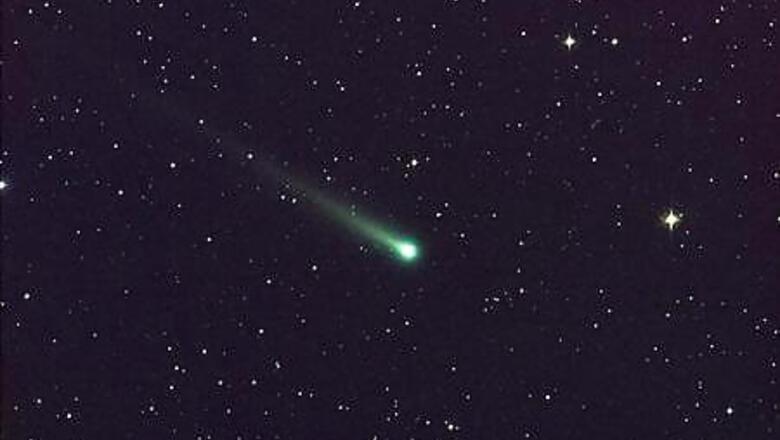
views
A comet is heading for a close encounter with the sun later this month, and if it is not vaporized or torn apart, it should be visible to the naked eye in December.
Comet ISON is expected to pass just about 621,000 miles (1 million km) from the sun's surface on November 28.
Scientists are not sure how ISON will hold up. As it blasts around the sun, traveling at 234 miles per second (377 km per second) the comet will be heated to about 5,000 degrees Fahrenheit (2,760 degrees C), hot enough to vaporize not just ice in the comet's body, but also rock and metal.
If the heat does not kill ISON, the sun's gravity may rip it apart. But recent calculations show ISON will survive, scientists say.
The comet was discovered in September 2012 by two amateur astronomers using Russia's International Scientific Optical Network, or ISON, for which the comet is named.
It was extraordinarily bright at the time, considering its great distance beyond Jupiter's orbit, raising the prospect of a truly cosmic spectacle as it approached the sun.
That is because heat from the sun causes ice in a comet's body to vaporize, creating bright, distinctive tails and fuzzy looking, glowing bodies. Depending on how much ice a comet contains, the closer it comes to the sun, the brighter it shines.
Over the weekend, amateur astronomers began posting the first pictures of the comet on the Internet that were taken with just binoculars or small telescopes.
"I finally saw Comet ISON for the first time using small binoculars!" pilot Brian Whittaker wrote on the SpaceWeather.com website. "It was faint, but is predicted to brighten and move each day! Exciting!"
Comets are believed to be frozen remains left over from the formation of the solar system some 4.5 billion years ago.
The group of comets that ISON is from is located in the Oort Cloud, a reservoir of icy bodies beyond Neptune's orbit. Occasionally, an object is gravitationally bumped out of the cloud and into a flight path that brings it into the inner solar system. Computer models show ISON is a first-time visitor.
The comet is moving through the constellation Virgo low in the eastern sky before dawn, astronomer Tony Phillips wrote on SpaceWeather.com.
"It is still too dim for naked-eye viewing, but an increasingly easy target for backyard optics," Phillips added.
If predictions prove correct, the comet should be visible to the naked eye in Earth's early morning skies in early December and throughout the night beginning in January.


















Comments
0 comment